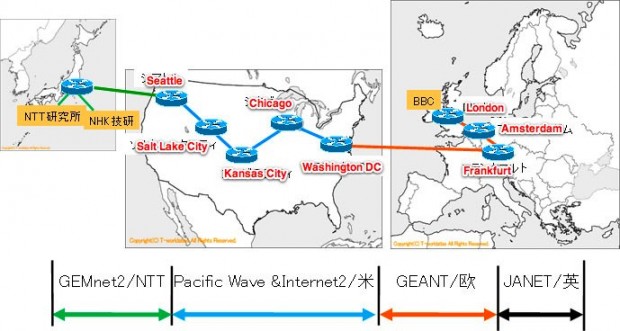Japanese telecommunications powerhouse NTT and public broadcaster NHK have been working on the so-called Super Hi-Vision standard for years, and now the companies announced [JP] they succeeded in testing international transmission of video in this format over the Internet.
Super Hi-Vision boasts 16 times the resolution of full HD, namely 7,680×4,320 pixels.
In the experiment, the signals were sent from NHK’s Science & Technology Research Laboratories in Tokyo to the US, Germany, the Netherlands, the BBC in London, and then back to an NTT lab in Tokyo (see picture above).
According to NHK, the signals traveled around 80,000km, with a time lag of just 0.3 seconds (time lag via satellite is said to stand at around 1.2 seconds).
NHK currently plans to switch on test-broadcasting in Super Hi-Vision in 2020, saying that the technology could be used for public viewing of international sports events in Japan, for example.
The broadcaster says that now being able to send signals through the web marks another step in its efforts to reduce communication costs.
